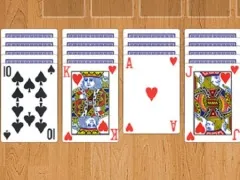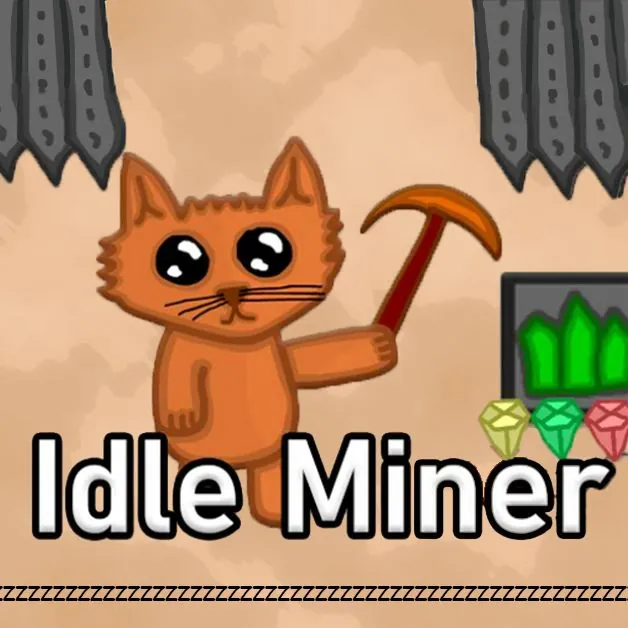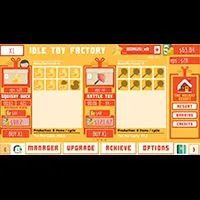2048
SIMILAR GAMES
Description
2048 - Unblocked Games G+
About 2048 - Unblocked Games G+
We are excited to delve into the captivating world of 2048, a digital puzzle that has captivated players across the globe. This deceptively simple game, originally conceived by Gabriele Cirulli, challenges players to merge numbered tiles on a grid, culminating in the achievement of a 2048 tile. While the mechanics are easy to grasp, the strategic depth of 2048 provides hours of engaging gameplay.
2048's appeal lies in its accessibility and its capacity to stimulate the mind. The game's premise is straightforward. It involves a 4x4 grid where players slide numbered tiles in four directions: up, down, left, and right. When two tiles with the same number collide while moving, they merge into a single tile with the sum of their values. The objective is to reach a tile with the value of 2048.
2048's success lies in its simplicity. There are no complex rules to master. The game begins with a few tiles showing the number 2 or 4. The player uses arrow keys or swipe gestures to move the tiles, and new tiles appear after each move. The strategy emerges as players must consider tile placement and anticipate the consequences of each move to avoid filling the grid prematurely or creating dead ends.
Understanding the Basics of 2048
The fundamentals of 2048 are remarkably easy to learn. Let's review the core mechanics:
- The Grid: The game is played on a 4x4 grid, providing 16 spaces for tiles.
- Tile Values: Tiles initially display the number 2 or 4. The game's objective involves combining similar tiles to create larger values, increasing by powers of two (2, 4, 8, 16, 32, and so on).
- Merging Tiles: When two tiles with identical values collide during a move, they merge to form a single tile with the sum of their values. For instance, merging two 2s creates a 4, and merging two 4s creates an 8.
- Game Over: If the grid is full and no further moves are possible (no adjacent tiles can merge), the game ends.
- Winning the Game: The ultimate goal is to reach the 2048 tile.
The true challenge of 2048 lies in anticipating the implications of each move. It demands foresight and the capacity to plan several steps ahead.
Strategic Gameplay: Mastering 2048
Achieving success in 2048 requires more than just luck; it necessitates thoughtful strategy. Let's explore some effective techniques:
Corner Strategy
The "corner strategy" is a popular and effective method. It entails keeping the highest value tile in one of the grid's corners, such as the top right corner. This approach helps in:
- Tile Organization: Maintain the highest value tile in a corner and arrange the other tiles around it in descending order.
- Minimizing Disruptions: This corner acts as an anchor, reducing the chances of random tile placement disrupting your game plan.
- Controlling Tile Flow: By keeping the largest tile in a corner, you limit the direction in which tiles can merge.
Prioritizing Merges
Efficiently merging tiles is crucial. Aim to merge tiles as early as possible to:
- Create Space: Merging tiles frees up space on the grid for new tiles.
- Avoid Gridlock: Delaying merges can lead to a cluttered grid and fewer options.
- Strategic Planning: Carefully consider the sequence in which you merge tiles. Sometimes, it is advantageous to postpone a merge.
Anticipating Moves
Success in 2048 requires you to think ahead, considering the consequences of each move. Before swiping, contemplate:
- Potential Outcomes: What will the grid look like after the move?
- New Tile Placement: Where will the new tile appear? How will it affect the overall arrangement?
- Future Merges: Will this move facilitate or hinder future mergers?
Adaptive Strategies
While having a core strategy is beneficial, adaptability is equally important. There are times when you will need to adjust based on the game's progression:
- Grid Evaluation: Frequently assess the grid. Are you moving in the right direction?
- Flexibility: Don't be afraid to deviate from your primary strategy if a different approach offers a better outcome.
- Learning from Mistakes: Analyze your losses to understand where you went wrong.
Advanced Techniques and Tips
After mastering the basics, you can use advanced techniques to improve your 2048 gameplay.
Prioritize High-Value Tile Placement
Focus on keeping your highest value tiles confined to one area of the grid, often a corner or edge. This prevents these tiles from being pushed around randomly. Key points to note:
- Corner Control: Aim to keep the largest tile in a corner.
- Adjacent Value: Position tiles with the next highest values adjacent to the corner tile.
- Strategic Movements: Plan moves to keep high-value tiles protected.
Control the Grid Flow
Control the flow of tiles to minimize the appearance of the smaller value tiles near your high value tiles. This approach allows you to better manage the grid. Steps to consider:
- Directional Control: Choose directions that facilitate merges while also managing grid space.
- Anticipation: Predict where new tiles will appear and the impact of this placement.
- Avoid Dead Ends: Prevent situations where moves block potential mergers.
Recognizing Patterns
Becoming attuned to patterns and potential moves is crucial for long-term success. Key things to consider:
- Merge Sequences: Identify tile sequences that can lead to mergers.
- Obstacle Avoidance: Identify moves that can disrupt favorable patterns.
- Adapting to Situations: Adjust your approach based on the grid's configuration.
Common Pitfalls to Avoid
Even the most experienced players encounter challenges in 2048. Recognizing and avoiding these pitfalls can significantly improve your results:
Filling the Grid Prematurely
One of the most common errors is filling the grid too quickly, resulting in no possible moves. Tips to avoid this:
- Space Management: Prioritize moves that create empty spaces on the grid.
- Strategic Merging: Don't merge tiles unnecessarily, particularly early in the game.
- Planning Ahead: Always think about potential future moves and grid configurations.
Creating Dead Ends
Creating situations where tiles become isolated and mergers are impossible can quickly end the game. Tips for this:
- Movement Planning: Carefully consider each move to avoid trapping tiles.
- Corner Strategy: Keep a high-value tile in a corner to limit the number of moves.
- Grid Analysis: Regularly examine the grid for potential dead ends.
Failing to Plan Ahead
Lack of foresight is a frequent mistake, leading to sub-optimal moves that limit your options. Key elements to consider:
- Predict Outcomes: Anticipate what the grid will look like after a move.
- Think Several Moves Ahead: Plan for future mergers and tile placements.
- Adaptability: Be ready to adjust your strategy.
Variations and Related Games
The success of 2048 has inspired a multitude of variations, offering unique gameplay experiences.
Themed Versions
Many themed versions of 2048 are available. These use different images, themes, and even gameplay mechanics, offering a fresh perspective on the classic. Common themes include:
- Pop Culture: Games that use characters or elements from movies, TV shows, and video games.
- Numbers and Symbols: Different numbers, symbols, or alphabets.
- Visual Variations: Themes that alter the game's appearance and colors.
Variations in Grid Size
Some versions alter the standard 4x4 grid, changing the game's difficulty and strategy.
- Larger Grids: Offer increased challenge, and demand more planning.
- Smaller Grids: Provide a faster-paced experience.
- Unique Shapes: Games may use alternative grid shapes to offer different challenges.
Expanding the Concept
Many games have built upon the basic mechanics of 2048, introducing new elements and strategies. Examples of this include:
- Power-Ups: Additional features, such as tile removers or tile shufflers.
- Multiplayer Modes: Allowing players to compete directly.
- Puzzle Elements: Variations with time constraints or specific objectives.
Tips for Long-Term Success in 2048
To continue improving your skills in 2048, consider these long-term strategies:
Consistent Practice
Regular play is crucial to improving your skills. Practice frequently to:
- Familiarity with Mechanics: The more you play, the better you'll understand the mechanics.
- Pattern Recognition: You will begin to recognize patterns and optimal move sequences.
- Intuitive Play: Your decision-making will become more instinctive.
Analyze Your Games
Reviewing your gameplay will show where you made mistakes and areas for improvement. Steps to consider:
- Review Losses: Examine the game's end to identify errors.
- Identify Patterns: Spot the recurring issues that hinder your progress.
- Learn from Mistakes: Use your insights to refine your future play.
Experiment with Strategies
While a core strategy is helpful, experimenting with new approaches and tactics can enhance your skill. Tips to consider:
- Test Different Approaches: Try a variety of strategies to see which ones work best for you.
- Adapt and Evolve: Adjust your tactics as the game progresses.
- Stay Flexible: Be prepared to change your approach based on the layout of the grid.
2048 - Unblocked Games G+ on https://ubggplus.gitlab.io
For an engaging experience with 2048, we encourage you to visit https://ubggplus.gitlab.io. There, you can enjoy a seamless and accessible gaming experience.
https://ubggplus.gitlab.io provides:
- Uninterrupted Gameplay: Enjoy the game without disruptions.
- Accessibility: Play 2048 on any device, anytime.
- User-Friendly Interface: Benefit from an intuitive and clean game design.
We hope this article helps you to improve your understanding of 2048 and encourages you to enjoy this addictive puzzle game on https://ubggplus.gitlab.io.
2048 invites players into a subtly complex puzzle where mathematics meets strategic maneuvering in a confined space. At its core, the game’s premise is seemingly straightforward: swipe to move and merge tiles of equal values, exponentially doubling them towards the target of a 2048 tile. Yet, beneath its minimalist interface lies a rigorous test of planning and foresight. Each swipe fills the 4×4 grid slightly, introducing new “2” or “4” tiles.
Strategic Harmony in Numbers
The essence of 2048’s challenge blooms in managing the numeric landscape. Players must cultivate a tactical harmony where each move is part of a broader strategy. The goal is to avoid isolating high-value tiles which could block potential merges. Advanced players often adopt a corner strategy, anchoring their highest value tile in a fixed position to build around. This methodical approach turns each session into a cerebral dance, where every slide, every merge, and every new tile plays into a grander scheme of spatial economy and numeric potential.
2048’s allure springs from its blend of simplicity and cognitive engagement. It doesn’t just challenge players to hit a numeric target but encourages the development of a nuanced strategy to navigate its tight, evolving board. Each game is a fresh mental workout, a puzzle that’s as addictive as it is rewarding, drawing players back to surpass their personal bests and redefine their strategic limits. This game transforms a simple grid and a series of numbers into an arena of infinite possibilities and mind-bending puzzles, proving that true challenge often comes in the most unassuming forms.















































